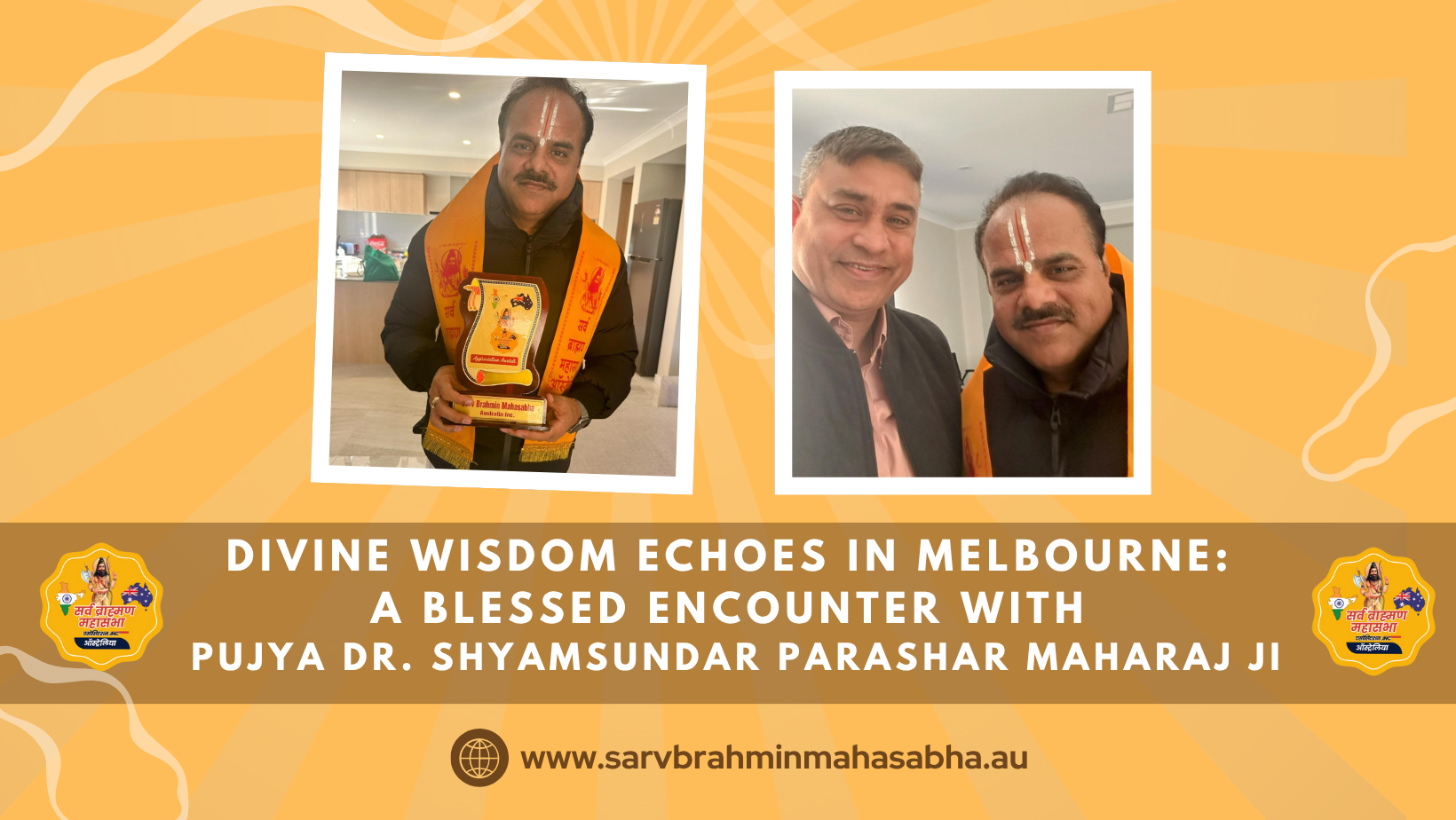Melbourne, Australia — In a spiritually uplifting moment for the Indian and Brahmin diaspora in Australia, Sarv Brahmin Mahasabha Inc. Australia had the divine privilege of welcoming and honoring Pujya Dr. Shyam Sundar Parashar Ji Maharaj, a revered scholar and spiritual guide of the Sanatan tradition.
Held in the heart of Melbourne, the event was marked by deep reverence, devotion, and the presence of esteemed members of the community. President Shri Ravi Sharma along with other senior members of the Mahasabha extended a heartfelt welcome and felicitation to Maharaj Ji, acknowledging his lifelong dedication to Vedic knowledge, Dharma Seva, and spiritual awakening.
A Message of Timeless Values
During his inspiring discourse, Dr. Shyam Sundar Parashar Ji shared pearls of wisdom rooted in Vedic philosophy, emphasizing the relevance of Dharma, selfless service, and the importance of preserving Indian culture and values across generations—especially among youth growing up outside India.
He beautifully stated,
“Sanatan Dharma is not just a religion, it’s a way of life—a path of compassion, knowledge, and inner awakening.”
His words deeply moved the audience, who listened in silent admiration and spiritual absorption.
Honoring a Life of Spiritual Service
As a mark of respect, the Mahasabha offered a traditional shawl of honor and memento, expressing gratitude for Maharaj Ji’s spiritual guidance. His presence brought a renewed sense of unity, pride, and purpose to the community.
President Shri Ravi Sharma said,
“It’s a divine blessing for us to host a saint whose life has been devoted to enlightening others. His presence in Melbourne is not only auspicious but incredibly motivating for all who walk the path of Dharma.”
Bridging Cultures with Spiritual Unity
Events like these are part of Sarv Brahmin Mahasabha Inc. Australia’s ongoing mission to nurture spirituality, cultural pride, and social unity among global Brahmin communities. The organization continues to serve as a bridge between India’s ancient wisdom and the contemporary world through seva, satsang, and cultural outreach.



Leave A Comment